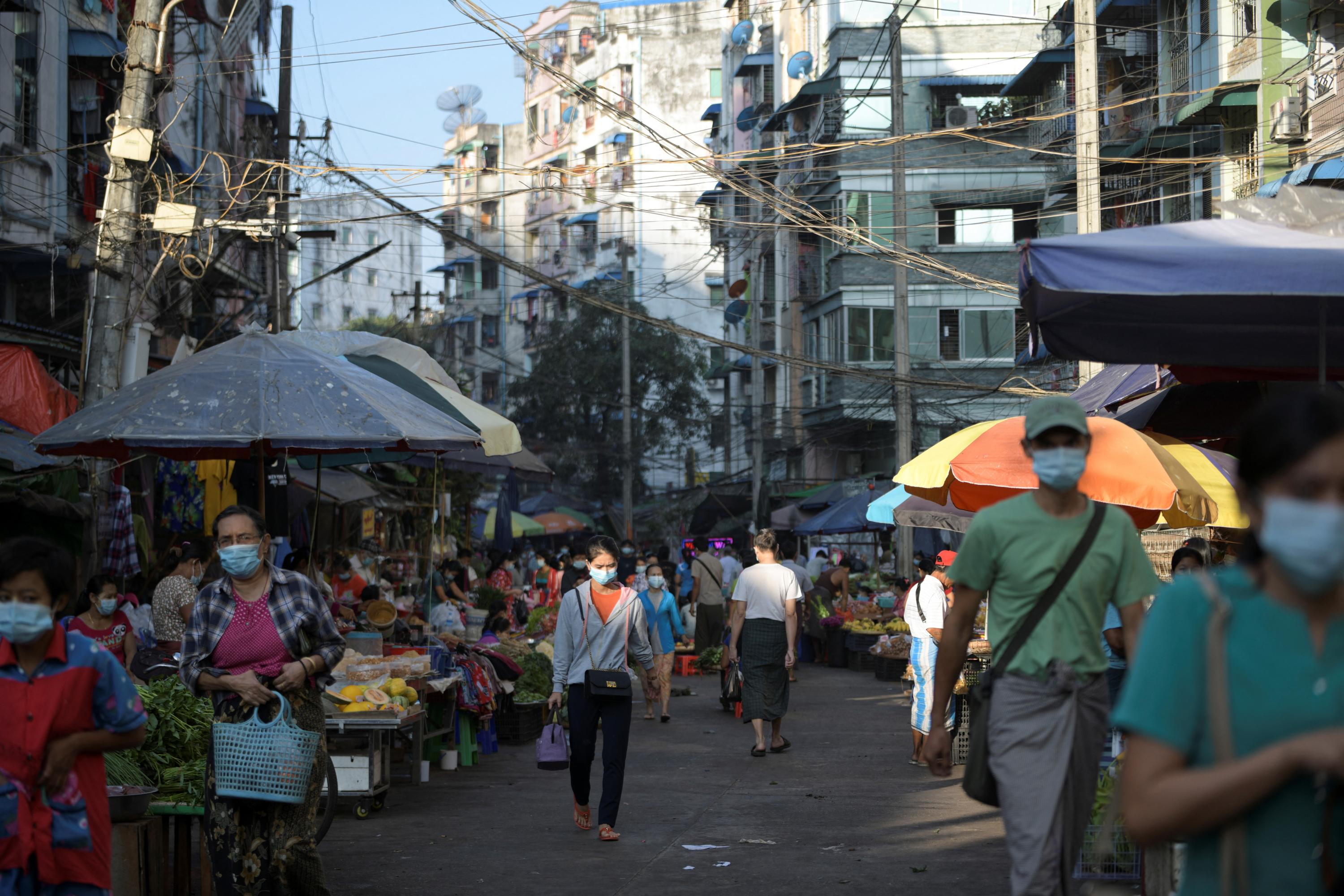World Bank expects Myanmar growth of 1%, economy 'critically weak'
Sign up now: Get insights on Asia's fast-moving developments

This comes on the back of an estimated 18 per cent contraction in the previous year as a result of the Covid-19 pandemic and the military coup.
PHOTO: REUTERS
Follow topic:
BANGKOK - The World Bank on Wednesday (Jan 26) projected that Myanmar's economy would grow by only 1 per cent in the year ending September 2022, warning that the figure indicates a "critically weak economy".
This is because it comes on the back of an estimated 18 per cent contraction in the previous year as a result of the Covid-19 pandemic and the military coup.
"It's actually surprising that rebound wasn't stronger," said the World Bank's senior economist for Myanmar Kim Edwards in a press briefing.
"In normal situations, you would expect, after a contraction of that size in the previous year, that you actually have a stronger rebound in the economy just because of the very low base effect."
Myanmar has been mired in political conflict since the military seized power on Feb 1, 2021, triggering massive demonstrations that have since morphed into armed insurgency in various parts of the country. The battles and insecurity have displaced at least 320,000 people nationwide, while putting millions at risk of poverty and hunger.
In a report released on Wednesday, the World Bank projected growth in the industrial sector, with continued export demand for garments and natural gas, as well as some recovery in construction.
But it stressed that its forecast "assumes that the emerging signs of stabilisation in the manufacturing and services sectors continue through most of this period, and that the impacts of conflict on economic activity do not escalate substantially further from what has been observed in recent months".
It added that Myanmar was "highly vulnerable" to the Omicron variant and further waves of the Covid-19 pandemic due to its low vaccination rate and poor health capacity. According to the Our World In Data project, just 32 per cent of its population has been fully vaccinated.
Meanwhile, the availability of data has worsened after the coup, said Mr Edwards. While the military administration is still releasing data on aspects like trade and inflation, data on gross domestic product is inaccessible, he revealed. Therefore, there is "substantial uncertainty" about the actual economic situation in the fiscal year that ended last September.
The report noted that areas where a rise in conflict has been most pronounced - Sagaing, Magway and Mandalay regions, as well as Kachin, Shan and Chin states - were responsible for about 38 per cent of total economic activity in 2019.
It expects the number of unemployed in Myanmar to have swelled by around one million since February last year, while those that have retained their jobs are likely receiving lower incomes.
Most indicators suggest that private investment has fallen markedly, and "some previously viable projects (including in the power sector) are becoming unviable as demand remains weak, the cost of imported inputs has risen, while kyat-denominated revenues are worth less in foreign currency terms", it said.
"There is also increased evidence that a more interventionist and inward-looking approach is being taken to economic management more generally," the report said.
Activities previously viewed as not viable, like state-owned steel factories and oil refineries, have been encouraged to restart.
While they were imposed to ease Myanmar's foreign exchange pressures and boost the local economy, "such measures had failed in the past and tend to divert resources from their most efficient use, while depriving Myanmar of the increased openness that has been a key driver of Myanmar's growth spurt over much of the last decade".
Meanwhile, the junta's restrictions on the use of the Internet could have significant economic costs if they persist, it said.

